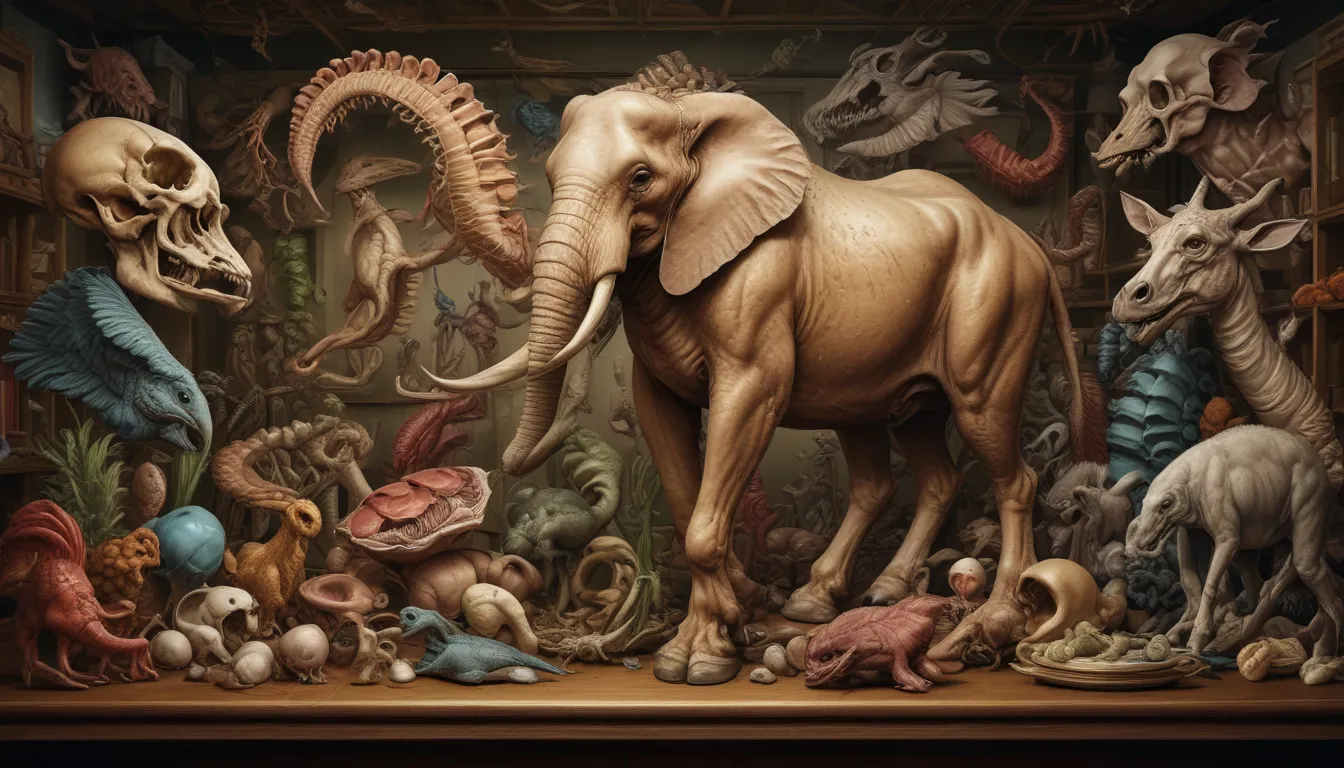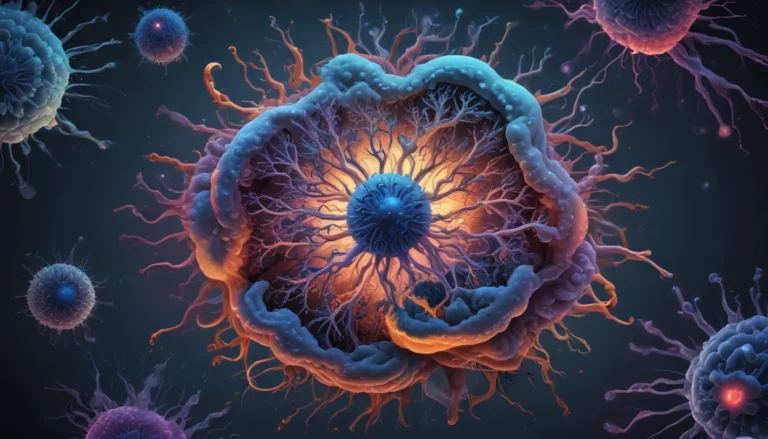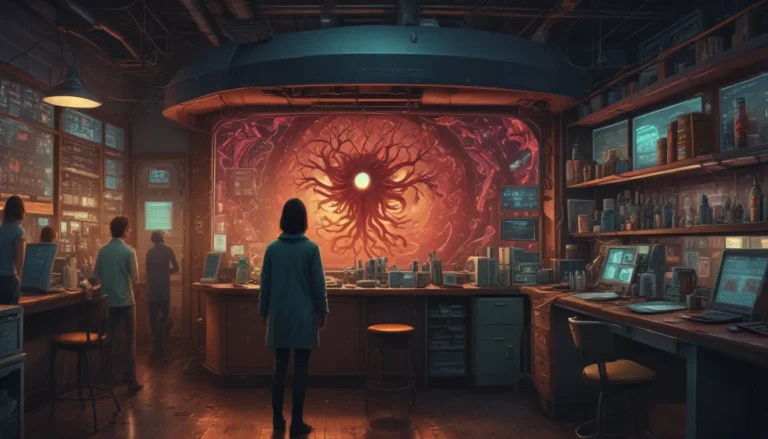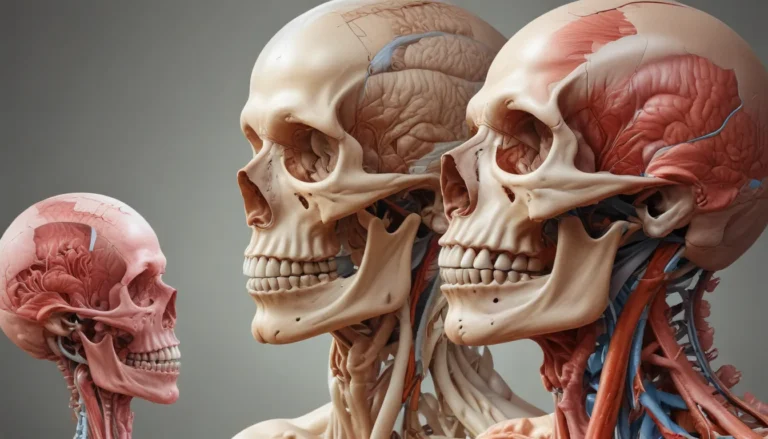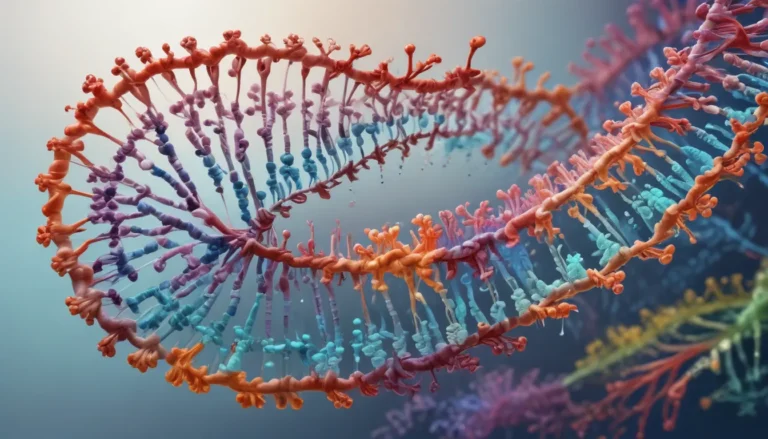A Note About Images: The images used in our articles are for illustration purposes only and may not exactly match the content. They are meant to engage readers, but the text should be relied upon for accurate information.
Greetings explorers of the natural world! Welcome to a journey of discovery through the captivating realm of comparative anatomy. This fascinating branch of biology allows us to unravel the mysteries of life by studying the similarities and differences in the anatomical structures of various organisms. Join us as we delve into 20 enigmatic facts that shed light on the marvels of comparative anatomy, from the purpose of the human appendix to the remarkable adaptations of creatures in diverse environments.
Exploring the Marvels of Comparative Anatomy
Comparative anatomy serves as a gateway to understanding the evolution, function, and adaptation of living organisms. By comparing anatomical features across species, scientists glean valuable insights into the interconnectedness of life on Earth. Let’s embark on this adventure of discovery and marvel at the intricate workings of nature revealed through anatomical structures.
Key Takeaways:
- Revealing Adaptations: Comparative anatomy unveils the amazing adaptations of animals, such as the giraffe’s long neck and the starfish’s regenerative powers, highlighting the diversity and complexity of life on our planet.
- Appreciating Nature’s Wonders: Through comparative anatomy, we gain a deeper appreciation for the incredible features found in the animal kingdom, from the seahorse’s male pregnancy to the elephant’s versatile trunk, showcasing the uniqueness of each species.
The Human Appendix: A Surprising Revelation
Contrary to past beliefs, the human appendix is not a vestigial organ with no function. Recent research indicates that the appendix may play a role in the immune system by serving as a storage site for beneficial gut bacteria, challenging previous notions about its purpose.
Wings or Fingers? The Mystery of Bat Anatomy
Did you know that the wings of a bat are actually modified forelimbs with elongated fingers? This intriguing adaptation enables bats to maneuver and fly, showcasing the remarkable diversity of structures in comparative anatomy.
The Iconic Giraffe’s Neck: A Unique Feat
The giraffe boasts the longest neck in the animal kingdom, consisting of only seven vertebrae, the same number as a human neck. Each vertebra can reach up to ten inches in length, allowing the giraffe to browse food from treetops with ease, showcasing nature’s ingenuity.
The Camel’s Hump: More Than Meets the Eye
Contrary to popular belief, the hump of a camel does not store water. Instead, it stores fat, which the camel can metabolize into water and energy during periods of food and water scarcity in the desert, highlighting the camel’s remarkable adaptation for survival.
The Aesthetic and Functional Beauty of Butterfly Wings
Butterflies are renowned for their stunning wing patterns and colors, which serve not only aesthetic purposes but also play a vital role in survival. The intricate designs on butterfly wings help camouflage them from predators and attract potential mates, highlighting the dual purpose of their beauty.
Orca’s Exceptional Hearing Abilities
Orcas, also known as killer whales, possess exceptional hearing capabilities, detecting sounds at frequencies up to 120,000 hertz, far beyond the human range. This heightened sense aids in their communication and hunting strategies, showcasing the diversity of sensory adaptations in the animal kingdom.
The Male Seahorse: A Unique Reproductive Marvel
In the world of seahorses, it is the male who carries and gives birth to the offspring. Male seahorses have a specialized pouch where females deposit their eggs, which the male fertilizes and nurtures until birth, exemplifying the extraordinary reproductive adaptations found in nature.
Starfish Regeneration: Nature’s Astonishing Ability
Starfish exhibit remarkable regenerative powers, fully regrowing lost limbs thanks to specialized cells called “blastemal cells.” These cells can transform into various cell types to rebuild lost body parts, demonstrating nature’s remarkable ability for renewal and survival.
Unveiling the Complexity of Our Senses
The intricate network of sensory receptors in our body enables us to taste flavors, perceive colors, and experience the world around us. Comparative anatomy helps us understand variations in these receptors across species, offering insights into the fascinating realm of sensory perception.
Engaging in Whales’ Complex Communication
Whales communicate through intricate patterns of clicks, songs, and vocalizations, allowing them to convey information over long distances. These acoustic signals play a vital role in their communication, behavior, and potentially even emotional expression, showcasing the complexity of whale language.
Geckos’ Remarkable Climbing Abilities
Geckos are renowned for their remarkable climbing abilities, thanks to specialized adhesive pads on their feet. These pads allow geckos to cling to various surfaces, even upside down, inspiring potential advancements in adhesive materials through the study of comparative anatomy.
Illuminating the Bio-luminescent Magic of Fireflies
Fireflies produce light through bio-luminescence, a chemical reaction involving the enzyme luciferase. This fascinating light production serves various purposes, from communication and mate attraction to warning predators, highlighting the diverse adaptations found in nature.
Elephant’s Versatile Trunk: A Multifunctional Organ
The elephant’s trunk is a marvel of anatomical versatility, combining functions of a nose, a hand, and even a snorkel. With over 40,000 muscles, the elephant’s trunk enables precise actions such as grabbing, pushing, pulling, drinking, and spraying water, showcasing nature’s design brilliance.
Birds’ Magnetic Navigation Skills
Many bird species navigate using the Earth’s magnetic field, possessing magnetoreceptors that help them sense subtle changes in the magnetic field. This remarkable ability aids birds in their migratory journeys, highlighting the intricate adaptations found in the avian world.
The Enigmatic Archaeopteryx: A Link Between Dinosaurs and Birds
The Archaeopteryx represents an intriguing link between dinosaurs and modern birds, displaying both reptilian and avian characteristics. With feathered wings like a bird but retaining features of its dinosaur ancestors, the Archaeopteryx captures the evolutionary transitions in comparative anatomy.
Chameleons’ Astonishing Eyes: A Field of Vision Marvel
Chameleons’ eyes are as remarkable as their color-changing abilities, providing a 360-degree field of vision with each eye moving independently. This unique eye structure allows chameleons to focus on two different objects simultaneously, showcasing nature’s optical marvels.
The Resilience of Tardigrades: Nature’s Unyielding Creatures
Tardigrades, also known as water bears, exhibit exceptional resilience, surviving extreme conditions such as freezing temperatures, high radiation, and even the vacuum of space. Their unique cellular structure and protective mechanisms enable them to thrive in the harshest environments, highlighting nature’s tenacity.
Bioluminescence in Deep-Sea Creatures: Illuminating the Abyss
Deep-sea creatures in the abyssal depths have evolved remarkable adaptations, including bioluminescence for communication, hunting, and camouflage in the dark ocean depths. The production of light through chemical reactions is a fascinating adaptation that aids these creatures in their mysterious underwater world.
Unraveling the Complexity of the Human Brain
The human brain is a complex organ that controls our thoughts, emotions, and actions. Comparative anatomy studies have revealed similarities and differences in brain structures across species, offering insights into the evolution of intelligence and the functioning of the human mind.
Myth Busting: Beyond the Five Senses
Contrary to popular belief, humans possess more than just five senses. In addition to sight, hearing, taste, touch, and smell, we have proprioception, thermoception, and many more sensory capabilities. Comparative anatomy helps us appreciate the intricate and diverse nature of human senses.
Conclusion: Embracing the Diversity of Life Through Comparative Anatomy
Comparative anatomy invites us to explore the wonders of evolution, adaptation, and interconnectedness among living organisms. From unraveling the secrets of homologous structures to deciphering the complexities of vestigial organs, comparative anatomy continues to captivate us with its revelations. Through the lens of anatomical comparisons, we gain a deeper understanding of the natural world’s diversity and beauty.
As we journey through the intricate world of comparative anatomy, let us marvel at the wonders of nature and appreciate the interconnected web of life. By studying the anatomical structures of various organisms, we unveil insights into their evolutionary histories and unravel the mysteries of biological diversity. Join us in celebrating the captivating field of comparative anatomy, where every discovery leads to a deeper appreciation of the marvels of life on Earth.
Frequently Asked Questions
- What is comparative anatomy?
-
Comparative anatomy is a branch of biology that involves studying the similarities and differences in the anatomical structures of different organisms.
-
Why is comparative anatomy important?
-
Comparative anatomy allows us to explore evolutionary relationships between species and understand how they have adapted to their environments over time.
-
How is comparative anatomy used in scientific research?
-
Scientists use comparative anatomy to make inferences about species’ evolutionary histories, identify shared traits, and study anatomical adaptations for specific functions.
-
What are homologous structures?
-
Homologous structures are anatomical features with the same underlying structure but may serve different functions in different organisms, indicating a common evolutionary origin.
-
Can comparative anatomy be used to study extinct species?
- Yes, comparative anatomy can be used to study extinct species by analyzing their skeletal remains and comparing them to the anatomy of living organisms.
We hope this journey through the enigmatic facts of comparative anatomy has inspired your curiosity and deepened your appreciation for the wonders of the living world. Join us in unraveling nature’s mysteries and celebrating the intricate beauty of life’s diverse forms. Happy exploring!
